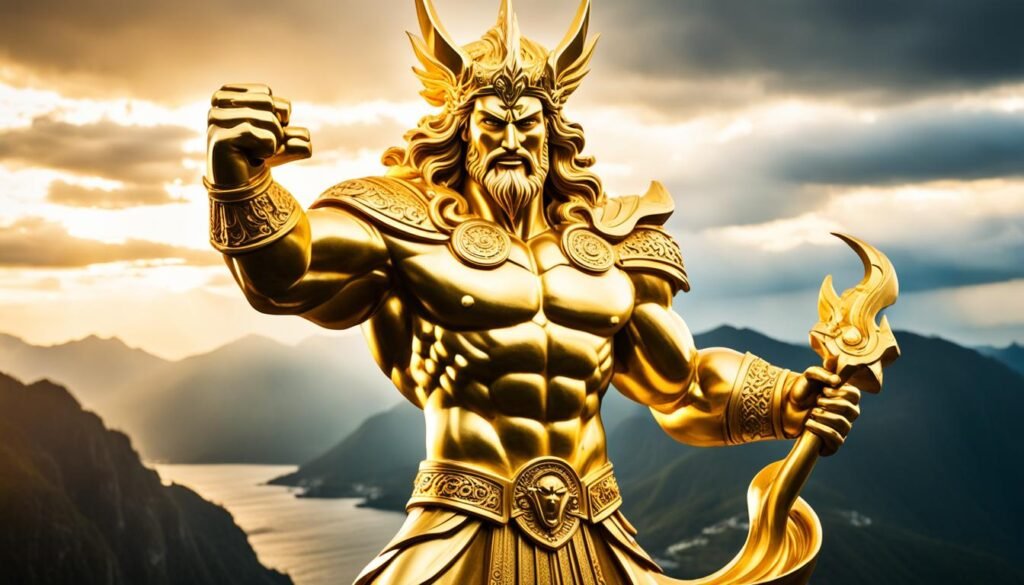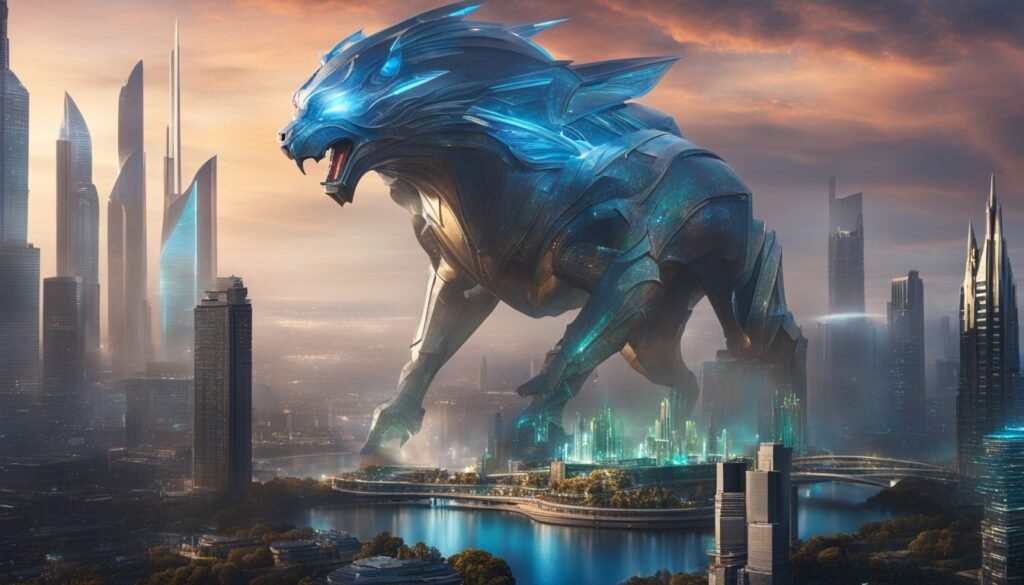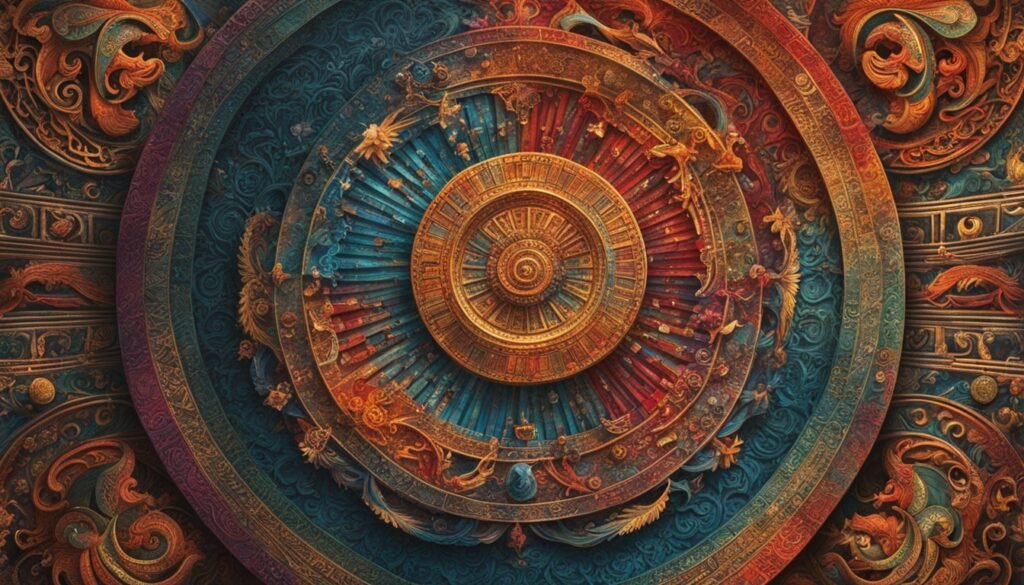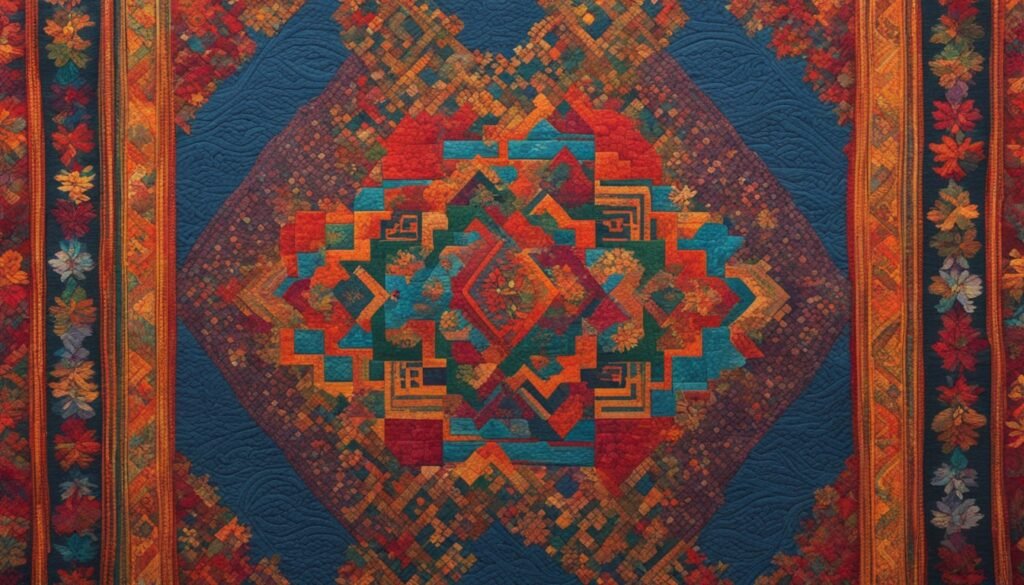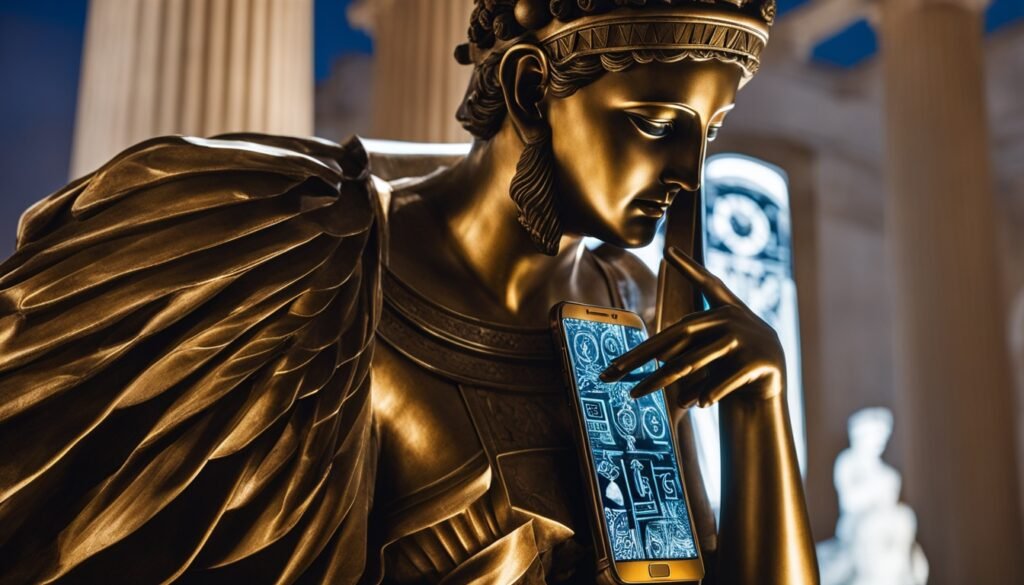Myths Culture : Myths have captivated people for centuries, influencing who we are, what we believe, and the values we hold. Over time, our interpretation of these stories has changed a lot. This change has led to a deep impact on how we view and use these ancient tales now.
Greek myths are a great example of this ongoing influence. They still inspire and shape our art, literature, movies, and even how we talk today. Looking at where these myths came from and how they’ve changed can show us a lot. It helps us see how stories connect us across different cultures and keep our histories alive.
Key Takeaways : Myths Culture
- Myths shape cultural identity, beliefs, and values, reflecting societal changes over time.
- Modern interpretations and reimaginings of ancient myths significantly impact their cultural significance and relevance.
- Greek mythology provides a prime example of how timeless tales continue to inspire and influence art, literature, film, and everyday language worldwide.
- Examining the enduring legacy of myths across various mediums and cultures fosters cross-cultural consciousness and preserves cultural identities.
- Shared narratives, such as those found in myths, serve as cultural touchstones that connect ancient and modern stories.
The Enduring Legacy of Greek Mythology
Greek mythology is a rich tapestry of stories that have captivated audiences for centuries. They told of gods, heroes, and monsters in ancient Greece. These stories explained natural events, human actions, and the world’s beginnings. They continue to influence today’s culture, including literature, art, and media.
Origins and Evolution of Greek Myths
Greek myths started in ancient Greece’s oral traditions, passed on from one generation to the next. Poets like Homer and Hesiod wrote them down. They shaped Greek culture, helping people understand their world and sharing their beliefs.
Influence on Literature, Art, and Popular Culture
Greek myths greatly influenced literature and drama. Works like Homer’s Iliad and Odyssey are classic examples. They inspired many writers and playwrights over the years. These stories also deeply impacted art, seen in sculptures and paintings of mythic figures. Even today, advertisements draw inspiration from Greek myths.
| Mythic Influence in Literature | Mythic Influence in Art | Mythic Influence in Popular Culture |
|---|---|---|
| Homer’s Iliad and Odyssey | The Statue of Zeus at Olympia | Disney’s Hercules |
| Sophocles’ Oedipus Rex | Botticelli’s The Birth of Venus | Marvel’s Thor franchise |
| Shakespeare’s Hamlet | Michelangelo’s The Creation of Adam | Coca-Cola’s “Mythic Creatures” campaign |
The legacy of Greek mythology shows the lasting value of these ancient stories. They are a key link between the past and modern times. These stories reflect our shared human experiences and shape our understanding of the world.
Folklore and Mythology in Modern Storytelling
In today’s world, fast and full of tech, storytelling still thrives. Classic tales, from folk stories to myths, fascinate us. They help us understand each other and our world.
Lessons and Values Conveyed Through Tales
Since ancient times, stories have taught us life’s big lessons. They show the fight between good and evil, overcoming tough times, and truths about being human.
Today, these stories still teach us about morals, kindness, and finding purpose. We learn from tales like Icarus’s story or from the underdog’s win. These lessons help us face our modern problems.
Reimagining Classic Stories for Contemporary Audiences
Our stories change as our world does. We now tell stories that mix old myths with today’s values and issues.
For example, fairy tales now break old ideas about who is brave or powerful. And sci-fi stories retell old epics in new ways. These new tales keep old stories alive and engage people today.
“Stories have power. They delight, enchant, touch, teach, recall, inspire, motivate, challenge. They help us understand. They imprint a picture on our minds.”
– Janet Conner, author and spiritual teacher
Myths Culture: Connecting Ancient and Modern Narratives
The meaning of myths goes beyond ancient times. Their stories and ideas play a big part in today’s modern storytelling. They help us see how old tales relate to who we are now. They show how stories unite people’s thoughts and values over long periods and different places.
Today’s movies and books often use mythic elements. They show us shared emotions and experiences. From Greek myths to stories from every corner of the world, ancient narratives have touched us all deeply.
Looking at where myths and modern culture meet, we find a rich tapestry. It covers common experiences and timeless ideas that go beyond time and location. This helps us understand what it means to be human and how stories shape our view of the world.
| Ancient Myth | Modern Interpretation |
|---|---|
| The Odyssey by Homer | The Odyssey (2000 film), O Brother, Where Art Thou? (2000 film) |
| The Legend of King Arthur | Excalibur (1981 film), The Once and Future King (1958 novel) |
| The Epic of Gilgamesh | Enkidu and Gilgamesh (2021 graphic novel), Immortality (2014 film) |
Above, the table shows how ancient narratives stay relevant in modern media. It proves the lasting power and importance of these myths.
By linking ancient narratives with modern culture, we value timeless themes and symbols. They continue to shape our shared tales and who we are. This helps us face today’s challenges, using lessons from the past to guide our future.
The Hero’s Journey: A Universal Archetype
The hero’s journey is a story pattern found in many myths and folktales. It’s a universal archetype that speaks to everyone. Mythic heroes go on quests that transform them. They face challenges and beat obstacles that we all deal with, making their stories timeless.
Mythic Heroes and Their Transformation
Today, we see the hero’s journey in stories all around us. From ancient tales to modern movies, this theme remains popular. It links us to issues like self-discovery, growth, and understanding life.
The hero’s journey reflects changes in our world. But its main aspects, like adventure calls, meeting help from the supernatural, and triumphing over troubles, still reach audiences. These steps help people think about their own personal journeys and changes.
“The hero’s journey is a universal pattern, the one and only story we have to tell.”
– Joseph Campbell, American Mythologist
By looking at mythic heroes and their significant quests, we learn more about ourselves. The stories illustrate the ageless power of storytelling to guide us, both as individuals and communities.
| Stage of the Hero’s Journey | Description |
|---|---|
| The Call to Adventure | The hero receives a call to embark on a quest, often prompted by a challenge or a desire for change. |
| The Road of Trials | The hero navigates a series of obstacles and challenges, testing their courage, wit, and resilience. |
| The Transformation | The hero undergoes a profound personal transformation, shedding their old self to embrace a new identity. |
| The Return | The hero returns from their journey, having gained new wisdom and the ability to share their experiences with others. |
The hero’s journey is more than just a story model. It’s a reflection of our shared human experience. Looking at how mythic heroes change helps us understand ourselves.
Cross-Cultural Consciousness Through Shared Stories
The popularity and impact of myths and folklore spread awareness of cross-cultural consciousness. They help people understand and feel for different ways of life. This makes us see the world as more connected, finding what we share while celebrating our unique differences.
Sharing shared stories helps us look beyond our own cultures. It lets us appreciate how we are all connected by culture. Myths and folklore act like a bridge, uniting diverse people under common themes and stories.
By diving into these stories, people can learn about others’ views and beliefs. This can challenge personal assumptions, leading to a world viewpoint filled with acceptance and empathy. These tales help build a cross-cultural consciousness.
“Myths are public dreams, dreams are private myths.” – Joseph Campbell
Myths and folklore have an everlasting appeal. They speak to what it means to be human, regardless of culture. Exploring these shared stories opens doors to understanding the world and its rich cultures.
The sharing of mythic tales promotes a view of the world as interconnected. It helps us see similarities in the human experience while valuing our differences. Engaging with these varied cultural stories enriches people, leading to a deeper understanding and empathy for others.
Exploring the Mythological Foundations of Media
Modern media, like film, games, and digital content, often use myth stories. They grab our attention and show us big ideas. This helps us see how old myths still affect today’s stories. So, mythic elements make pop culture richer.
Looking at how stories change over time, we learn a lot about these old tales. From action movie stars to video game lands, myths are part of our everyday stories now. These mythic elements are part of our pop culture deeply.
Recognizing Mythic Elements in Pop Culture
Myths have a big role in today’s media in many ways. For example, we see heroes, tricksters, and wise guides in big movies and games. Also, mythical creatures, magic powers, and bizarre worlds are in our shows and games too.
| Mythic Element | Examples in Modern Media |
|---|---|
| Hero’s Journey | Star Wars, The Lord of the Rings, Harry Potter |
| Trickster Archetype | Loki (Marvel Cinematic Universe), Q (Star Trek) |
| Supernatural Abilities | X-Men, Stranger Things, The Matrix |
| Otherworldly Settings | Game of Thrones, Dune, The Chronicles of Narnia |
Seeing these mythic elements in our shows and games can help us appreciate their lasting effect. They still connect with us today, making these stories even more special.
Myths as Cultural Touchstones
Myths go beyond just stories of gods and heroes. They mirror the values and traditions of those who created them. These tales, shared over time and place, are key to keeping culture alive. Storytelling links us to our past and lets us share our story with the world.
Preserving Cultural Identities Through Stories
Myths capture the heart of a culture’s identity. They tell stories based on shared beliefs and experiences. By sharing these tales, cultures keep their identity strong, even as the world changes around them.
In today’s world, saving our cultural identity is crucial. We face the risk of losing our unique stories to the sameness of global culture. Through myth, communities find a way to celebrate their history and traditions.
| Myth | Cultural Significance | Modern Interpretation |
|---|---|---|
| The Epic of Gilgamesh | Reflects the values and beliefs of ancient Mesopotamian civilization, including the search for immortality and the importance of community. | Continues to inspire contemporary works of literature and film, exploring timeless themes of human mortality and the quest for meaning. |
| Dreamtime Myths of the Aboriginal Australians | Encapsulate the deep spiritual connection between the Aboriginal people and the land, as well as their understanding of the natural world. | Serve as a means for Aboriginal communities to maintain their cultural identity and pass on their traditions to younger generations, even in the face of modernization. |
| The Ramayana | Embodies the ideals of dharma (moral duty), loyalty, and the triumph of good over evil, which are central to Hindu and South Asian cultures. | Continues to be adapted and reinterpreted in various forms of media, including films, TV series, and comic books, highlighting its enduring relevance and appeal. |
Looking at myths teaches us about the close bond between stories and who we are. Through storytelling, we safeguard the rich variety of human culture. This way, our cultural legacy stays strong and vibrant in the midst of change.
The Evolution of Storytelling Mediums
Storytelling is key in human culture, helping us store and share impactful tales. As technology grows, how we do this has changed a lot. It’s led to new ways to understand and be part of stories.
At first, we shared tales by mouth. Now, we have movies and digital stories. This change has made it easier to reach more people. It also makes stories feel more relatable to us today.
Writing down stories was a big step. It let us spread them far and wide. Then, printing made them even easier to get. Films and TV brought stories closer with moving images and sound.
Today, digital tech lets us jump into stories with things like virtual reality. This makes us part of the story. We can now feel like we’re in the world of the story, making it more personal.
As storytelling changes, we see how lasting and powerful stories are. They always find a way to be relevant. This shows their unique ability to keep sharing important messages from the past.
“The medium is the message. This is merely to say that the personal and social consequences of any medium – that is, of any extension of ourselves – result from the new scale that is introduced into our affairs by each extension of ourselves, or by any new technology.”
– Marshall McLuhan
Also Read: What Common Myths Surround Ancient Civilizations?
Conclusion
Myths shape who we are and what we believe. They show us how society changes over time. And they help us understand the world by telling stories.
Greek myths, for example, dig deep into our cultural roots. They bring people from different places together. By sharing these stories, we become aware of others’ cultures and treasures our own.
As stories get told in new ways, like through the internet, myths remain key. They connect us to themes that are always relevant, no matter where or when. Learning about myths and how they’re used today tells us a lot about people and their stories.
Uncovering myths’ role in our lives shows how deep their impact goes. They have linked us since ancient times to now. They remind us of our shared human journey. Moving forward, studying these tales will keep teaching us and bringing us closer as a global community.
FAQs
How do modern interpretations and reimaginings of ancient myths impact their cultural significance and relevance in contemporary society?
Modern takes on ancient myths change how we see them today. They reflect our current values and changes in society. Yet, they hold onto key themes and characters that always made myths last.
What is the enduring legacy of Greek mythology, and how has it influenced literature, art, and popular culture worldwide?
Greek myths have left a deep mark on culture worldwide. Stories of gods, heroes, and monsters influence everything from old plays to new movies and TV. They inspire our art and culture to this day.
How do folklore and mythology continue to shape modern storytelling, and what lessons and values do these timeless tales convey?
Folklore and myths are still important in how we tell stories today. They teach us important lessons about courage and good overcoming evil. Even with new stories, their key messages stay the same.
How do the connections between ancient myths and contemporary narratives help us better understand the universal human experiences and cultural touchstones that myths represent?
Linking old myths to today’s stories helps us see their lasting importance. Modern media and literature often use these old elements. It helps us understand the big themes myths focus on.
What is the significance of the “hero’s journey” narrative structure, and how does it continue to resonate with modern audiences across cultures?
The hero’s journey is a story pattern many cultures share. It’s about heroes on big quests, facing life’s challenges. Modern stories still use this model, which speaks to everyone.
How do shared mythic narratives foster a sense of cross-cultural consciousness and understanding?
Myths from different cultures help us understand each other better. They let us experience other cultures through stories. This can lead to more empathy and broader worldviews.
How do modern media and entertainment draw upon the mythological foundations of storytelling, and what insights do these adaptations provide into the continued relevance of timeless tales?
Today’s media often uses myths to tell new stories. This helps these old tales stay meaningful and adaptable. It shows how myths connect with audiences across time and culture.
How do myths serve as cultural touchstones, and how do they contribute to the preservation of cultural identities?
Myths are key in keeping a culture’s values and stories alive. From old tales to new retellings, they let us keep in touch with our roots. They help us share our culture with others too.
How have the forms and mediums of storytelling evolved, and how has this impacted the ways in which mythic narratives are adapted and shared with audiences?
Storytelling has changed a lot over the years, from spoken word to movies and digital worlds. New tech helps myths reach more people in different ways. It keeps these stories fresh and relevant.
Source Links
- https://www.abookgeek.com/the-impact-of-greek-mythology-on-modern-culture/
- https://arbiteronline.com/2024/01/30/unraveling-the-threads-folklore-and-mythologys-enduring-influence-in-modern-culture/
- https://commons.lib.jmu.edu/cgi/viewcontent.cgi?article=1543&context=honors201019
